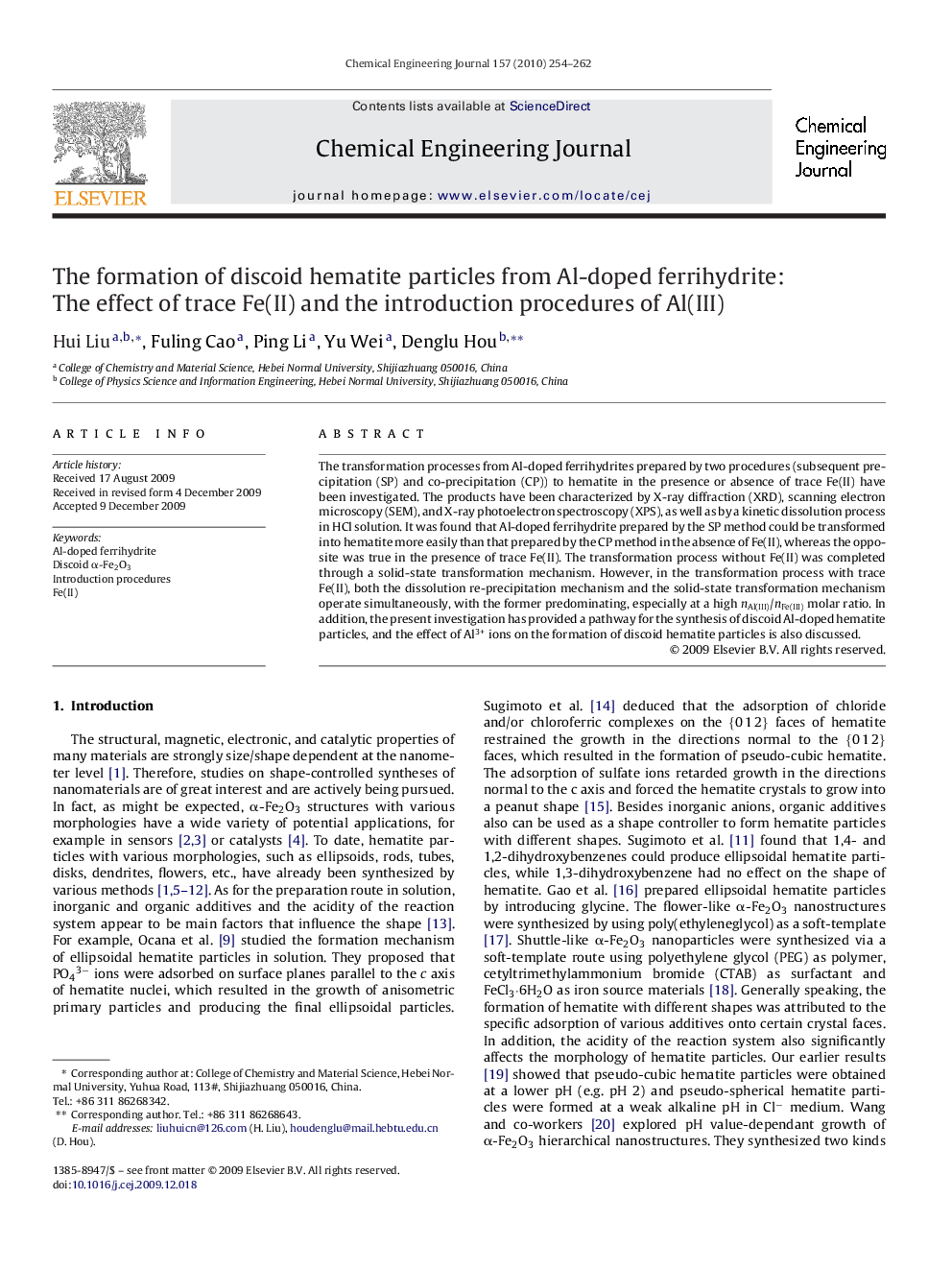| Article ID | Journal | Published Year | Pages | File Type |
|---|---|---|---|---|
| 152709 | Chemical Engineering Journal | 2010 | 9 Pages |
The transformation processes from Al-doped ferrihydrites prepared by two procedures (subsequent precipitation (SP) and co-precipitation (CP)) to hematite in the presence or absence of trace Fe(II) have been investigated. The products have been characterized by X-ray diffraction (XRD), scanning electron microscopy (SEM), and X-ray photoelectron spectroscopy (XPS), as well as by a kinetic dissolution process in HCl solution. It was found that Al-doped ferrihydrite prepared by the SP method could be transformed into hematite more easily than that prepared by the CP method in the absence of Fe(II), whereas the opposite was true in the presence of trace Fe(II). The transformation process without Fe(II) was completed through a solid-state transformation mechanism. However, in the transformation process with trace Fe(II), both the dissolution re-precipitation mechanism and the solid-state transformation mechanism operate simultaneously, with the former predominating, especially at a high nAl(III)/nFe(III) molar ratio. In addition, the present investigation has provided a pathway for the synthesis of discoid Al-doped hematite particles, and the effect of Al3+ ions on the formation of discoid hematite particles is also discussed.
